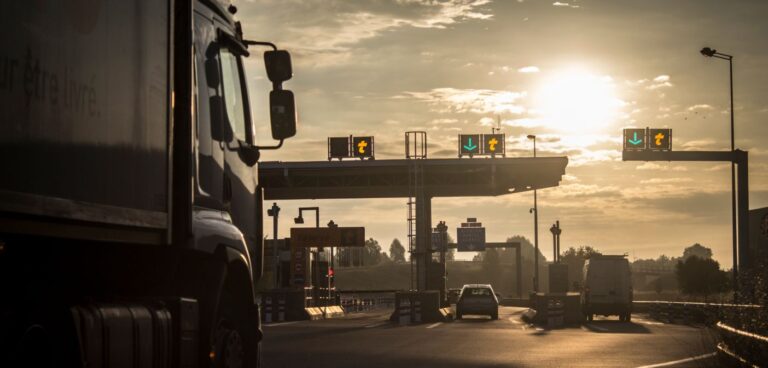Taxes on transport fuel generate around £28bn of UK government income but not for much longer, writes Alan McKinnon, professor of logistics, Kuehne Logistics University, Hamburg.
As we transition to an era of low-carbon electro-mobility, they will need to be replaced by a new system of distance-based charging. So argued a recent Transport Select Committee report on road pricing – but with barely a mention of freight traffic. The fact that UK-registered HGVs run around 17 billion miles annually on Britain’s roads and contribute over £5bn in fuel tax appears to have been overlooked.
There may be some hesitation in taxing trucks by the mile following the Lorry Road User Charging (LRUC) fiasco of 2003-2005. As a staunch critic of this scheme, I felt it involved taking a ‘sledgehammer to crack a nut’. The ‘nut’ back then was a policy objective to ‘level the playing field’ between British hauliers and foreign competitors filling their tanks with cheaper diesel fuel before entering the country. This was a worthy goal but one that could have been achieved more cheaply and easily. The government abandoned its LRUC scheme in 2005, but not before £50m had been squandered on planning and consultancy.
I was never opposed in principle to the application of road pricing to freight vehicles and, like the Transport Committee, now see it as the best option for post-fossil-fuel taxation. Dividing the annual fuel tax lorries currently pay by the total distance they travel suggests an average charge of around 30p per mile. It is unlikely, however, that this would be imposed uniformly. Governments, and possibly local authorities, are likely to use the flexibility offered by GPS-based road pricing to vary charges by time of day and congestion level, thereby using the price mechanism to manage road capacity.
The technology for road pricing is much more sophisticated and widely-applied today than in 2005. A 2021 survey found that 79% of UK freight fleets were using telematics. Six other European countries have had more than 10 years’ experience with the ‘electronic network-wide tolling’ of trucks and have accumulated extensive experience that can be shared internationally.
The switch to distance-based taxation will still raise a host of economic and administrative issues. For example, should it run in parallel to the current system of diesel fuel duty while the truck fleet ‘defossilises’? How can the present zero-tax status of electric vehicles be phased out without discouraging the shift from diesel? And how can we ensure that a UK system of electronic truck tolling is inter-operable with that of our EU neighbours post-Brexit?
The Transport Committee’s plea for urgent government action on this applies as much to lorries as cars. Hauliers will soon need to know how the total cost of ownership (TOC) of the new generation of electric vehicles compares with diesel equivalents. As diesel fuel tax represents almost a quarter of the cost of running a 44 tonne artic, the relative economics of electric and diesel traction will be strongly influenced by the choice of charging regime.
This article originally appeared in the March 2022 issue of Logistics Manager. Click here to read the original article.





